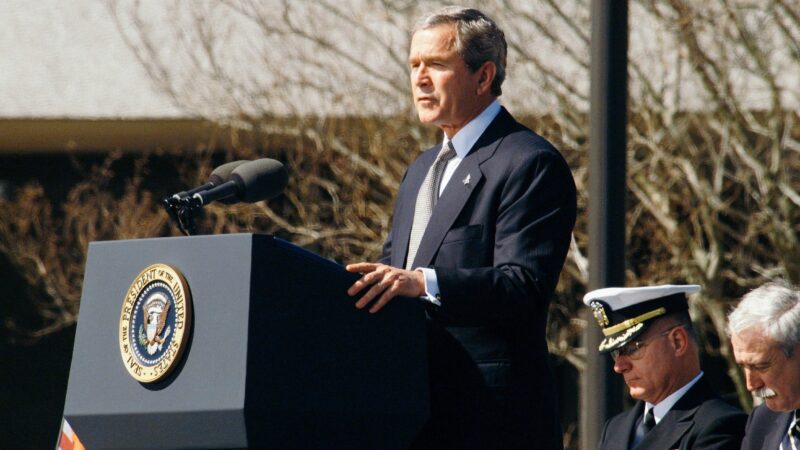On the 19th February 2024, the Alabama Supreme Court ruled that embryos created through IVF are “children”, and should be legally recognised as such. This issue was brought by three couples suing their IVF providers due to the destruction of their children while being cryogenically stored under an existing Death of a Minor statue in the state. This statute explicitly covered foetuses (presumably to allow for compensation to be sought by women who has suffered miscarriages or stillbirths which could have been prevented), but there was some ambiguity over whether IVF embryos were covered prior to the ruling that it applies to “all unborn children, regardless of their location”. It has since been revealed that the person responsible was a patient at the clinic in question, so while mainstream outlets have stated that the damage was ‘accidental’, I find this rather implausible given the security in place for accessing cryogenic freezers. It is the author’s own suspicion that the person responsible was in fact an activist foreseeing the consequences of successful Wrongful Death of a Minor lawsuit against the clinic for the desecration of unborn children outside the womb.
The ruling does not explicitly ban or even restrict IVF treatments; it merely states that the products thereof must be legally recognised as human beings. However, this view is incompatible with multiple stages of the IVF process, and this is what makes this step in the right direction a potentially significant victory. For those who may be (blissfully) unaware, the IVF process goes something like this. A woman is hormonally stimulated to release multiple eggs in a cycle rather than the usual one or two. These are then exacted and then fertilised with sperm in a lab. There is nothing explicitly contrary to the view that life begins at conception in these first two steps. However, as Elisabeth Smith (Director of State Policy at the Centre for Reproductive Rights) explains, not all of the embryos created can be used. Some are tossed due to genetic abnormalities, and even of those that remain usually no more than three are implanted into the womb at any given time, but they can be cryogenically stored for up to a decade and implanted at a later date or into someone else.
In this knowledge, three major problems for the IVF industry in Alabama become apparent. The first is that they will not be able to toss those which they deem to be unsuitable for implantation due to genetic abnormalities. This would massively increase the cost to IVF patients as they would have to store all the children created for an unspecified length of time. This is assuming that storing children in freezers is deemed to be acceptable at all, which is not a given as any reasonable person would say that freezing children at later stages of development was incredibly abusive. The second problem is that even if it is permitted to continue creating children outside of the womb and storing them for future implantation (perhaps by only permitting storage for a week or less), it would only be possible to create the number of children that the woman is willing to have implanted. This would further increase costs as if the first attempt at implantation fails, the patient would have to go back to the drawing board and have more eggs extracted, rather than trying again from a larger supply already in the freezer. The third problem is that, particularly if the number of stored children increases dramatically, liability insurance would have to cover any loss, destruction, or damage to said children, which would make it a totally unviable business for all but the wealthiest.
The connection between this ruling and the abortion debate has been made explicitly by both sides. Given that it already has a total ban on abortion, Alabama seems a likely state to take further steps to protect the unborn, which may spread to other Republican states if they are deemed successful. The states that currently also impose a total ban on abortion either at any time after conception or after 6 weeks gestation (where it is only possible to know of a pregnancy for 2 weeks) are Arkansas, Kentucky, Louisiana, Mississippi, Missouri, Oklahoma, South Dakota, Tennessee, Texas, North Carolina, Arizona, and Utah. There are other states with an exception only for rape and incest, with some requiring that this be reported to law enforcement.
However, despite the fact that the ruling was made by Republicans appointed to their posts at the time of Donald Trump’s presidency, he has publicly criticised this decision saying that “we should be making it easier for people to have strong families, not harder”. Nikki Haley appeared initially to support the ban, but later backtracked on this commitment. In a surprisingly intellectually honest move, The Guardian made an explicit link between the medical hysteria on this topic and the prevalence of female doctors among IVF patients. Glenza (2024) wrote:
“Fertility is of special concern to female physicians. Residents typically finish training at 31.6 years of age, which are prime reproductive years. Female physicians suffer infertility at twice the rate of the general population, because demanding careers push many to delay starting a family.”
While dry and factual, this statement admits consciously that ‘infertility’ is (or at least can be) caused by lifestyle choices and priorities (i.e. prioritising one’s career over using ideal reproductive years in the 20’s and early 30’s to marry and have children), rather than genes or bad luck, and is therefore largely preventable by women making different choices.
I sincerely hope that, despite criticism of the ruling by (disproportionately female) doctors which a vested interest, the rule of law stands firm and that an honest interpretation of this ruling is manifested in reality. This would mean that for reasons stated above it will become unviable to run a profitable IVF business, and that while wealthy couples may travel out of state, a majority of those currently seeking IVF will instead adopt children, and/or face the consequences of their life decisions. Furthermore, I hope that young women on the fence about accepting a likely future proposal, pulling the goalie, or aborting a current pregnancy to focus on her career consider the long-term consequences of waiting too long to have children.



